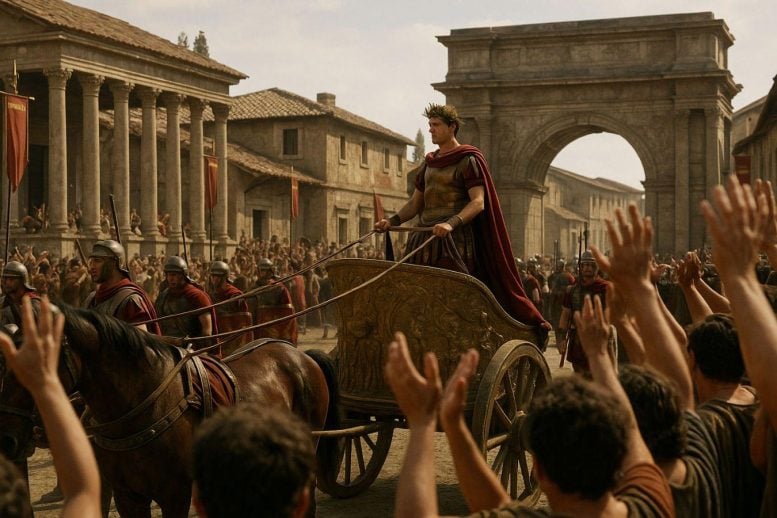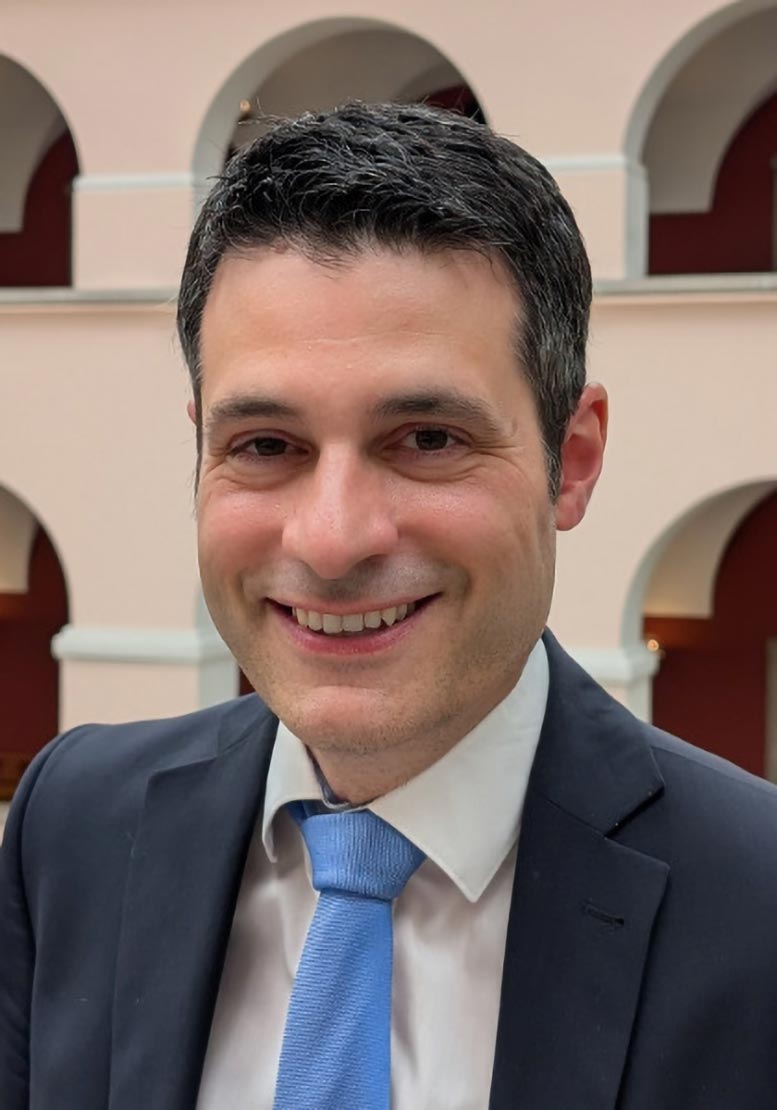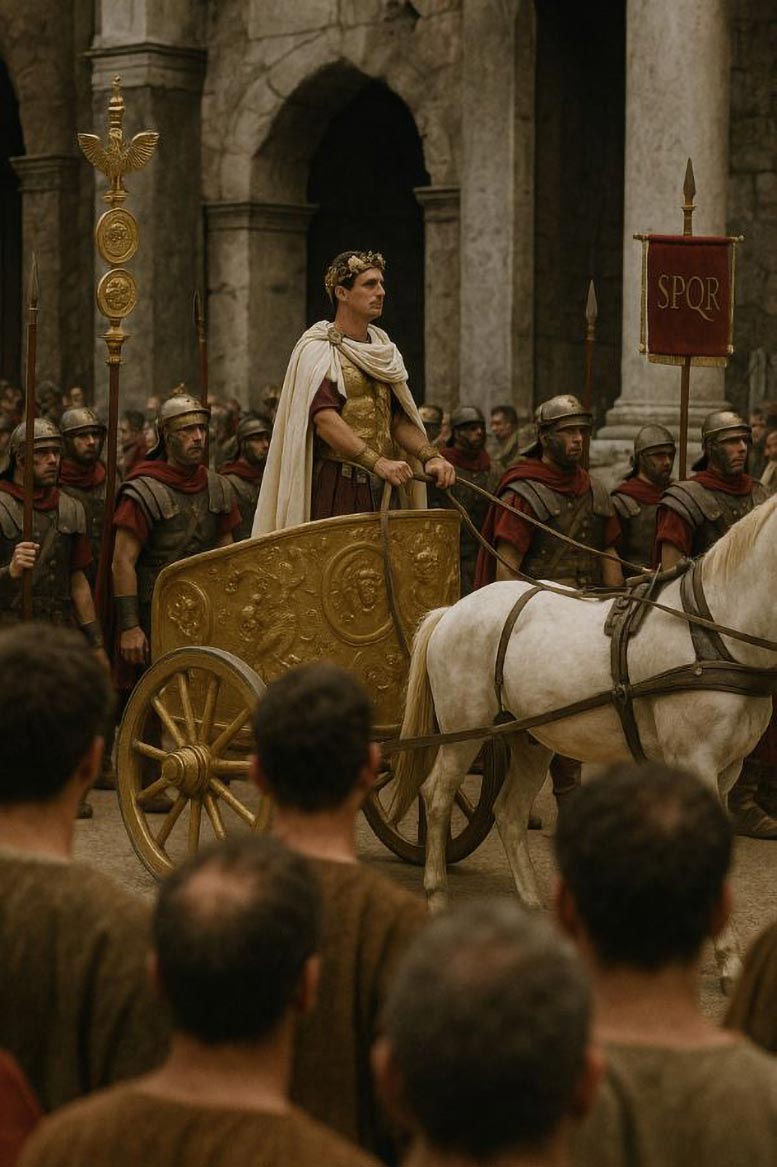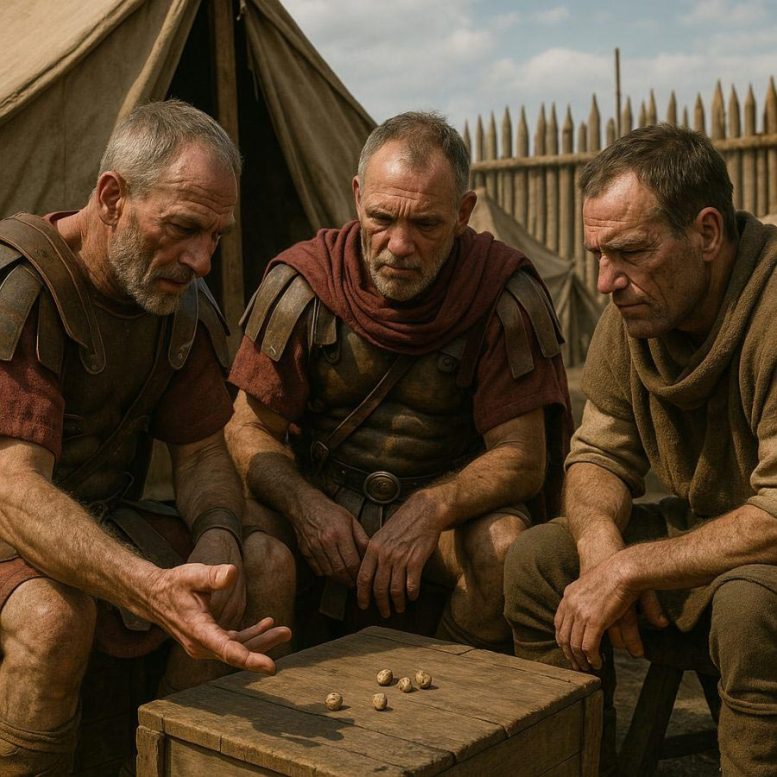PROTECT YOUR DNA WITH QUANTUM TECHNOLOGY
Orgo-Life the new way to the future Advertising by Adpathway A window to the past: This image was generated using AI as part of the Re-Experiencing History project. Credit: University of Zurich
A window to the past: This image was generated using AI as part of the Re-Experiencing History project. Credit: University of ZurichA Roman centurion in sneakers and sunglasses? That is the kind of playful distortion AI image generators sometimes produce when depicting the past. To address this, scholars in classical studies have created a new tool that generates historically accurate images of antiquity. Their approach provides not only more faithful visualizations but also fresh opportunities to explore and understand the ancient world.
Click, and suddenly three Roman soldiers appear, tossing dice. But something seems off — shouldn’t the dice be carved from bone and shaped differently? Felix K. Maier, professor of ancient history, turns to Phillip Ströbel, a computational linguist. “I’ll adjust the LoRA scale and tweak the prompt,” Ströbel replies. Words like LoRA scale and prompt are not what one would expect in a history seminar, yet they are becoming increasingly familiar.
 Felix K. Maier. Credit: University of Zurich
Felix K. Maier. Credit: University of ZurichTogether, Maier and Ströbel created Re-Experiencing History, a platform that employs artificial intelligence to generate historically informed images of Ancient Greece and Rome. The project merges three AI models, trained on academic literature and ancient sources, to produce visuals rooted in scholarly evidence. Standard AI image generators often rely on modern references and sleek digital aesthetics, which can result in comical anachronisms. In one early trial, for instance, the program produced a Roman triumphal procession — with onlookers capturing the spectacle on their smartphones.
Visual experience of history
“The AI may have used pictures of modern-day papal processions,” Maier suspects. The people pictured were also extremely muscular and chiseled, and the ancient city of Rome looked far too clean. “It wasn’t that easy to make the city look dirtier and get average-looking people,” says Ströbel. The new platform, whose AI is fed with accurate reconstructions from researchers’ work, can now create much more authentic and accurate images, adds the computer linguist.
The platform’s design resembles ChatGPT but comes with added capabilities. Users can select from three image-generation models, each offering different strengths. They can also refine prompts automatically, adjusting the input text that guides image creation. According to Maier, the tool is intended for use in research, education, and museums. “It enables historians to develop new perspectives,” he explains. “If we want to generate an image of a Roman triumph, we must ask ourselves precise questions. How visible was the triumphator among the cheering crowd? In what ways was victory staged to make an impact? And which path did the procession take?”
 This images was generated using AI as part of the Re-Experiencing History project. Credit: University of Zurich
This images was generated using AI as part of the Re-Experiencing History project. Credit: University of ZurichTwo decades ago, the television series Rome raised similar issues about the everyday lives of ordinary Romans. Maier references the influential historian R.G. Collingwood, who argued that genuine historical understanding requires reimagining past experiences. This idea underpins the project. “The more deeply we engage with AI-generated imagery, the more our historical imagination is activated,” Maier says. He stresses that this is not a threat to human creativity: “Engaging with AI forces us to evaluate the plausibility of what it produces. AI gives us visual hypotheses, and it is our task to reflect on them.”
Dive right into the action
The AI tool doesn’t produce definitive visualizations but rather invites users to experiment with different scenes. This can also be particularly effective in educational settings. “When high school students are tasked with depicting the coronation of Charlemagne, the platform lets them dive right into the action and raises important questions: For example, how did the pope position himself to appear larger than the emperor?” says Maier.
 This image was generated using AI as part of the Re-Experiencing History project. Credit: University of Zurich
This image was generated using AI as part of the Re-Experiencing History project. Credit: University of ZurichThe historian believes that tackling these kinds of questions leads to a deeper understanding of historical processes and the interests that drive them. These insights enable high school students to develop their own ideas, evaluate their assumptions and reflect on them. Of course, adds Maier, the use of the tool requires instruction and guidance. However, when used properly, it can help users realize that recording history always involves a degree of interpretation.
 Phillip Ströbel. Credit: University of Zurich
Phillip Ströbel. Credit: University of ZurichEven with fine-tuned models, AI can still make mistakes when prompted to generate images based on historical contexts. But the two researchers view these errors as opportunities to learn rather than as shortcomings. Even if the generated images aren’t historically precise in every last detail, these inaccuracies and imperfections may provide valuable learning experiences. “Our method gives rise to new questions, even if not all Roman sandals in the image happen to be depicted accurately,” Ströbel says.
It was evident early on that this approach would work, back when students of ancient history were asked to test various AI models. According to the students’ feedback, the tool made them view Roman triumphs in an entirely new light. Maier and Ströbel hope to achieve a similar outcome through a planned collaboration with museums, in which visitors would be able to use the platform to generate their own images based on selected exhibition topics. In line with participatory museum practices, they could even create small “exhibitions within the exhibition.”
Unconventional collaboration
The research project of Felix K. Maier and Phillip Ströbel brings together two very different disciplines, ancient history and computational linguistics. “Of course, it takes a great deal of communication,” Maier says. “Sometimes Phillip has to explain to me over and over how these AI models work.” However, it’s precisely this kind of unconventional collaboration that allows them to go further than previous forms of interdisciplinary cooperation. In their day-to-day work, both researchers find that new insights often emerge where seemingly unrelated fields converge. In today’s digital world, Maier argues, such cross-disciplinary approaches are indispensable when it comes to tackling complex questions about the past.
The platform Re-Experiencing History, which is open to all members of UZH, is only one of many ongoing digital projects at the university. In the AIncient Studies Lab at the chair of Felix Maier, several people are currently working on an AI-supported database that translates classical texts. They also produce an AI podcast on topics related to antiquity. Maier and Ströbel are convinced that the humanities need to actively engage with artificial intelligence – or risk getting steamrolled by it. With their Re-Experiencing History project, they have opened the gate to a new, visually powerful way of thinking about and experiencing history.
Never miss a breakthrough: Join the SciTechDaily newsletter.
























 English (US) ·
English (US) ·  French (CA) ·
French (CA) ·  French (FR) ·
French (FR) ·